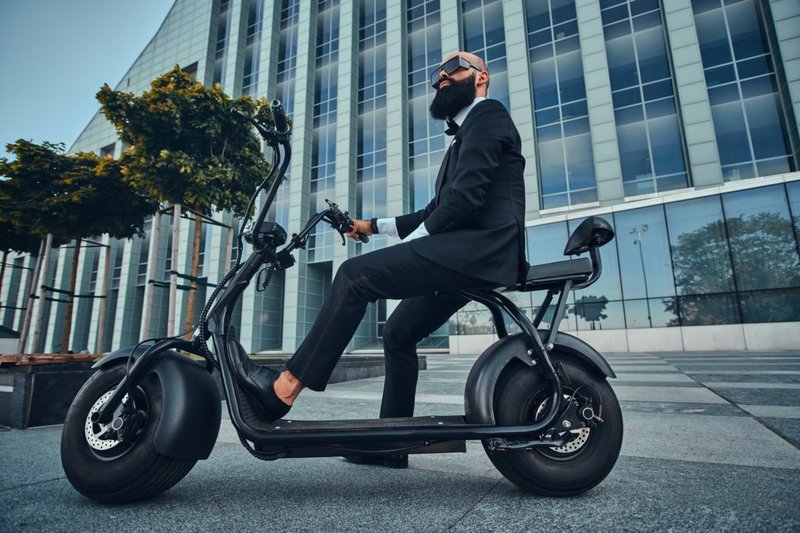Electric bike regulations vary by state in the USA. Some states classify electric bikes as bicycles, while others classify them as mopeds or motorcycles. The regulations can also differ based on the bike’s speed, power, and whether it has a throttle or pedal assist. It is important to check your state’s specific rules before riding an electric bike. (sources: [PeopleForBikes](https://www.peopleforbikes.org/electric-bikes/state-laws), [Bikexchange](https://bikexchange.com/electric-bike-rules-regulations/), [ebikesx.com](https://ebikesx.com/electric-bike-laws.php))
There are some people who consider riding an electric bike as cheating in so many ways. One reason that struck them is when it comes to exercise, they think that because these bikes have motors and batteries, riding it takes too little effort to be considered as an exercise. Another reason is although this mode of transport is motorized and far more different from the regular bikes, the traffic regulations still classify electric bikes regulations with basic bikes out there.
What do law say about electric bikes regulations?

Electric bike laws differ from which country you are. Not all electric bikes are obligated to follow the laws of electrically assisted pedal cycles. Pedal assists electric bikes, for instance, doesn’t necessarily have to follow what throttle electric bikes have to follow.
Throttle electric bikes are classified by road regulations as a moped or the same as a motorcycle so they follow electric bikes
regulations and are more restricted. This kind of electric bike runs at a top speed of more than thirty miles per hour which is dangerous if ridden on the same lane as regular basic bikes. Electric throttles are restricted to a top speed of twenty miles per hour when ridden on public roads. The rider also needs a license to legally ride this kind of electric bike.
Pedal-assist on the other hand aren’t restricted to follow such electric bikes regulations as what the throttles follow. They are much slower than throttles as the motors of these electric bikes can only assist the rider through pedaling. Pedal assists electric bikes are classified as the same as basic bikes. This kind of electric bikes is allowed to be ridden on regular bike paths along with the basic bikes.
Because throttles run faster than pedal assists and basic bikes they aren’t allowed to pass on bike paths.
Are E-Bikes Allowed at Races, Rides, Fondos, and Other Bike Events?

While we all know that the electric assists in pro bike races are illegal, see 60 Minutes Investigates Hidden Motors and Pro Cycling, many small local and state rides encourage e-bikes as a way of making their event more inclusive and accessible to a wide range of riders. Before registering for an event or ride, it is a good idea for riders to check with event organizers to confirm whether e-bikes are allowed at the event and any state or event-specific rules or electric bikes regulations that may apply.
Likewise, organizers of bike races, rides, and other events are encouraged to consult with their insurance companies on how the inclusion of e-bikes at their events may impact insurance coverage and costs. Policy language, as always, is key. In states where e-bike laws are ambiguous, event organizers will want to make it explicitly clear in their policies and riders what types of bikes will and won’t be covered at the event. If there are any questions about this, talk to a Bike Law attorneys within our network who are available for assistance.
Source: (bikelaw.com)
Where can I ride the e-bike? Or where is it prohibited to ride?

Not all countries restrict electric bikes regulations that moped transportations follow, even with the fact that they operate on motor and batteries. Electric bikes that run on throttles are prohibited to ride on bike paths as they run faster than regular bikes. Throttles run to over thirty miles per hour which depends on the different countries the electric bike is manufactured.
Pedal-assist electric bikes, on the other hand, is allowed to pass on bike paths as they are considered to operate just like the basic bikes.
Are there age restrictions when riding an e-bike?

Age restrictions when riding an electric bike differs in every country. In general, the minimum age requirements to ride an electric bike range from fourteen to eighteen.
Kids who are below that age are allowed to ride the bike but not drive them, but of course, for them to be allowed to ride they need to wear necessary protective gear or helmets. Although there are no such things as tests before someone could ride the electric bike, it is important that the rider should know the rules and electric bikes regulations of the road for their own safety. There are also some parts of countries that require to pass on motorcycle test to be able to ride the electric bike, but these are rare cases. If your country is one that has the same process, you need to comply to be able to ride the bike legally.
Is an E-bike a Moped, a Bicycle, or Something Else?

If you are confused, you are not alone. E-bikes are a relatively new type of transportation. They come in different models and varieties and do not always fit into one neat definition.
In some states, transportation and traffic laws have evolved and now expressly define what is meant by the term e-bike. In addition, many states have gone further and classified various types of e-bikes and created specific rules and electric bikes regulations applicable to each class. In most of the United States, however, explicit laws governing e-bikes are non-existent and e-bikes are often treated as mopeds and other motorized vehicles, regardless of their speed, power, and other characteristics.
Source: (bikelaw.com)
Do I need a license to ride an electric bike?

It makes a lot of sense to get an electric bicycle nowadays. It’s a vehicle that lets you work out, and when you are tired you just use the electric features and reach your destination in no time. You can purchase an electric bicycle in just about any country, however, things differ from one region to the other as you can imagine because of its electric bikes regulations.
Do I need a license to ride an electric bike?
In most countries, electric bicycles are treated similarly to regular bicycles, e.g. the same regulations apply and electric bikes regulations do not require a separate license. Still, in other countries electric bikes regulations are different. Make sure you check license requirements in a specific country.
Even if you are allowed to buy an electric bicycle in most countries, they may have different laws and rules when it comes to using them. Which is why you need to study all the local electric bikes regulations as much as possible. Naturally, some of these rules tend to be more confusing than others.
Speed electric bikes regulations in France in this article That’s why you need to identify whether riding an electric bicycle is ok or not in your particular country. Sometimes it can be, other times not so much. It’s all about the situation at hand and how you choose to manage it. That’s why in this article we will study whether you are allowed to ride an electric bicycle in most countries, so try to keep that in mind.
Source: (easyebiking.com)
What Paths Can You Ride Your E-Bikes On?

While we’re on the subject of the different restrictions e-bike types face, it’s important for cyclists to understand the four major bikeways in California and which bikes are allowed on each lane. First off, Class 1 Bike Paths are for the exclusive use of cyclists and pedestrians and are off main roads. Probably the most famous Class 1 Bike Paths are paved roads in natural areas. Only Types 1 and 2 e-bikes can go on Class 1 Bike Paths.
Class 2 Bike Lanes are the protected one-way bike lanes you see on various streets and highways. You will be able to see lines on the ground designating a Class 2 Bike Lane. All three e-bikes are allowed to use Class 2 Bike Lanes.
Third, Class 3 Bikeways are on roadways, but they don’t have any special markings on the road and can be used by motorists, pedestrians, and cyclists. Usually, Class 3 Bikeways are designated with a sign. Class 3 Bikeways are split into 3A and 3B, where 3A refers to shared lanes on arterial or parallel streets and 3B refers to bikeways in residential areas. All three e-bikes are allowed on Class 3 Bikeways.
Finally, Class 4 Bikeways are like Class 2 Bikeways, but they are protected from vehicular traffic with either a space or barrier such as curbs, a parking lane, or a sidewalk. Sometimes people refer to these lanes as cycle tracks. Only Types 1 and 2 e-bikes can use these lanes as electric bikes regulations.
Source: (bayareabicyclelaw.com)



